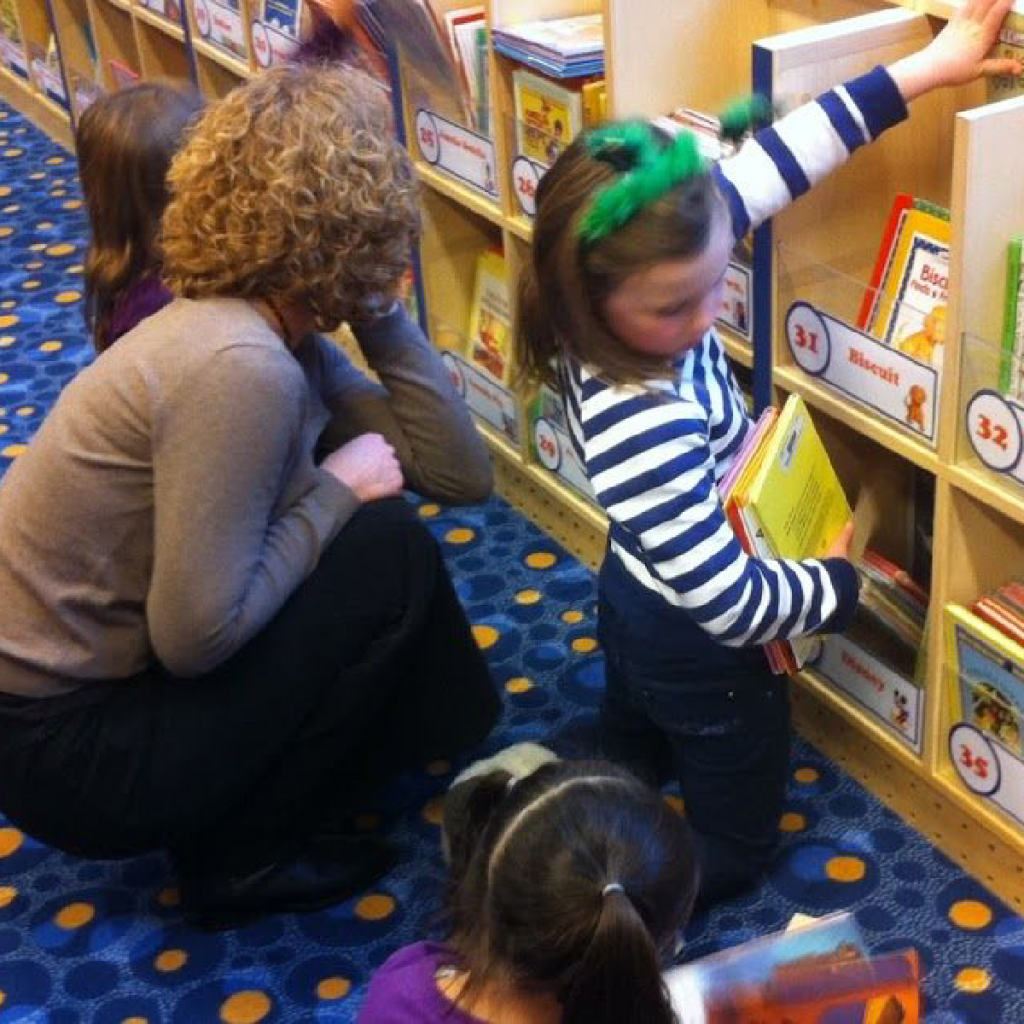Learn effective strategies for managing hyperactivity in the library.
How to Handle Hyperactivity in the Library
Oh, the joys of hyperactivity in the library! It’s like watching a whirlwind spin through a sea of books and quiet readers. But fear not, dear librarians and bookworms, for I have some tricks up my HTML sleeves to help you handle this energetic chaos. So, grab your bookmarks and let’s dive into the world of hyperactivity in the library!

Understanding Hyperactivity in Children
The first step in handling hyperactivity in the library is to understand what exactly we’re dealing with. Hyperactivity, my dear friends, is a state of excessive activity and restlessness. Think of it as a mini hurricane confined within the walls of our beloved library. It’s not a bad thing, just a little challenging!
But let’s dive deeper into this fascinating topic, shall we?
Defining Hyperactivity
Hyperactivity, in simple terms, refers to a child’s inability to maintain calm and stillness. These little bundles of energy often struggle with staying focused and controlling their impulses. Picture a tiny tornado whirling around your quiet book nook—they just can’t help themselves!
Now, you might be wondering, why do some children exhibit hyperactive behavior while others seem to be as calm as a summer breeze? Well, my friends, the answer lies in a combination of factors.
Common Causes of Hyperactivity
Now, what causes this frenzy of activity? Well, my friends, there are various factors at play. It could be genetic, an outcome of their unique personalities, or even a response to certain environmental stimuli. It’s like their brains are wired for non-stop action in the middle of our serene reading spaces!
Let’s explore these causes in more detail, shall we?
Genetics can play a significant role in hyperactivity. Some children may inherit certain genes that make them more prone to being hyperactive. It’s like a little genetic blueprint for perpetual motion!
But it’s not just genetics that contribute to hyperactivity. Each child has their own unique personality, and some personalities are naturally more energetic and active than others. It’s like they were born with an extra dose of zest for life!
Furthermore, environmental factors can also influence a child’s level of hyperactivity. Certain stimuli in their surroundings, such as loud noises or bright lights, can trigger a surge of energy that is difficult for them to contain. It’s as if the library itself becomes a playground of excitement!
So, my dear friends, hyperactivity is not simply a result of misbehavior or lack of discipline. It’s a complex interplay of genetic predispositions, individual personalities, and environmental influences. Understanding these factors is crucial in creating a supportive and inclusive environment for our energetic little library patrons!
The Impact of Hyperactivity on Library Environment
Ah, the library—the serene sanctuary where words dance on pages and minds get lost in tales of enchantment. But what happens when hyperactive little tykes burst through the doors? Let’s explore the impact they have on our beloved library.
Imagine yourself in the library, surrounded by the comforting scent of old books and the soft rustling of pages turning. You find solace in the quiet atmosphere, where the only sounds are the whispers of knowledge being shared. But suddenly, the tranquility is shattered by a burst of energy. The doors swing open, and in rushes a group of hyperactive children, their excitement palpable in the air. Their footsteps echo through the halls, and their laughter fills the space, disrupting the peaceful ambiance that once enveloped the library.
Disruptions Caused by Hyperactive Behavior
Picture this: You’re cozily nestled in the corner, immersed in a captivating story, when suddenly—ZOOM! A whirlwind of energy appears, scattering papers and hushing murmurs along its path. Yes, my friends, hyperactive behavior can be oh-so-disruptive in our peaceful haven of knowledge.
As the hyperactive children roam the library, their boundless energy knows no bounds. They dart between bookshelves, knocking over books and leaving a trail of chaos in their wake. The once-organized rows of books become disheveled, with volumes scattered haphazardly on the floor. The librarians, who work tirelessly to maintain order, find themselves constantly on their toes, trying to restore the calm that was once so easily found.
Not only do hyperactive children disrupt the physical order of the library, but they also disrupt the mental order of those seeking solace within its walls. The sudden bursts of energy and noise can startle and distract even the most focused individuals. The delicate balance of concentration is shattered, leaving library-goers struggling to regain their train of thought.
The Effect on Other Library Users
Hyperactivity doesn’t just affect the little whirlwinds themselves; it also has an impact on other library users. Picture a poor soul desperately trying to concentrate on that challenging assignment, only to be bombarded by a symphony of distractions brought to life by our energetic adventurers. It’s like trying to meditate during a rock concert!
The frustrated sighs and exasperated glances exchanged between library patrons are evidence of the toll hyperactive behavior takes on their ability to focus. The constant movement and noise create an environment that is far from conducive to deep thinking and contemplation. The library, once a refuge for quiet contemplation, becomes a battleground of conflicting energies.
But amidst the chaos, there is hope. The library staff, armed with patience and understanding, work tirelessly to find ways to engage the hyperactive children while also preserving the tranquility of the space. They create designated areas where the children can release their energy, filled with interactive learning stations and engaging activities. By providing an outlet for their boundless enthusiasm, the library staff aims to strike a balance between accommodating the needs of all library users.
So, the next time you find yourself in the library, surrounded by the whispers of knowledge, take a moment to appreciate the delicate dance between serenity and energy. Embrace the challenges that hyperactive behavior brings, for within them lies the opportunity to create a library environment that accommodates the needs of all who seek knowledge and inspiration.
Strategies for Managing Hyperactivity in the Library
Now that we’ve established the hyperactive havoc that can unfold within our precious library walls, it’s time to explore strategies for taming this energetic frenzy. Prepare to bring some order to the chaos!
But first, let’s delve deeper into the world of hyperactivity. Did you know that hyperactivity is often associated with Attention Deficit Hyperactivity Disorder (ADHD)? It is a neurodevelopmental disorder characterized by persistent patterns of inattention, impulsivity, and hyperactivity. These symptoms can make it challenging for children to focus and remain calm in a quiet environment like a library.
Now, let’s get back to the strategies for managing hyperactivity in the library.
Creating a Structured Environment
Structure is key, my friends! Creating a structured environment helps provide a sense of order, making it easier for our little whirlwinds to navigate the library. Use designated areas for different activities, like reading corners and quiet study zones. Think of it as guiding their tornado into a neat spiral!
Additionally, consider incorporating visual cues to assist hyperactive children in understanding and following the library’s rules. Color-coded signs, pictures, or symbols can help them comprehend the expectations and boundaries within the library space.
Furthermore, introducing a daily schedule or routine can be immensely beneficial. By establishing a predictable pattern of activities, hyperactive children can anticipate what comes next, reducing their anxiety and promoting a calmer atmosphere.
Implementing Quiet Activities
Ah, the power of distraction! Engaging hyperactive children with quiet activities can work wonders. Think puzzles, coloring books, or even a giant connect-the-dots masterpiece. These activities channel their energy into something productive while keeping them quietly entertained. It’s like a magical spell to tame their little cyclones!
Moreover, consider providing sensory tools such as stress balls or fidget toys. These objects can help hyperactive children release excess energy and improve their focus. The tactile stimulation they provide can be soothing and help them concentrate on their tasks.
Another effective strategy is to offer audiobooks or storytelling sessions. By listening to captivating narratives, hyperactive children can engage their imagination and focus their attention on the story, thus reducing restlessness and promoting a quieter library environment.
As we explore these strategies, it’s important to remember that each child is unique, and what works for one may not work for another. Flexibility and patience are key when implementing these techniques, as it may take time to find the right approach for each hyperactive child.
So, let’s embark on this journey of managing hyperactivity in the library, armed with knowledge and creativity, to create a welcoming and inclusive space for all children!
Communication Techniques for Hyperactive Children
Now that we’ve established some strategies for managing hyperactivity, it’s time to address communication. After all, conveying expectations and understanding is key to a harmonious library experience, even with our tiny whirlwinds around.
But let’s dive deeper into the world of communication techniques for hyperactive children. There are various approaches that can be employed to ensure effective communication and create a positive and engaging environment.
Effective Verbal Communication
When dealing with hyperactive children, words have power. Communicate expectations clearly and concisely. Use positive reinforcement to motivate them and highlight their progress. Picture yourself as the conductor of their energetic symphony, guiding them with a firm but encouraging tone!
However, it’s important to remember that each child is unique, and what works for one may not work for another. Some hyperactive children may respond better to visual aids or hands-on activities rather than solely relying on verbal communication. Therefore, it’s crucial to be flexible and adapt your communication style to suit the individual needs of each child.
Non-Verbal Communication Strategies
Ah, the art of non-verbal communication! Sometimes, words escape us when dealing with hyperactive children. Fear not, my friends, for there are other ways to convey your message. Use visual cues, hand gestures, and body language to guide their energetic spirits. It’s like choreographing a dance that perfectly complements their whirlwind moves!
For instance, you can create visual schedules or charts to help hyperactive children understand and follow instructions. These visual aids can serve as a roadmap, providing a clear path for them to navigate through tasks and activities. Additionally, incorporating hands-on activities and interactive games can further enhance their understanding and engagement.
Furthermore, non-verbal cues such as facial expressions, eye contact, and body posture can play a significant role in establishing a connection with hyperactive children. By maintaining a calm and composed demeanor, you can create a sense of stability and security, helping them feel understood and supported.
Remember, effective communication is a two-way street. Encourage hyperactive children to express themselves, listen attentively to their thoughts and ideas, and validate their emotions. By fostering open and respectful communication, you can build trust and strengthen your relationship with these energetic little souls.
Collaborating with Parents and Caregivers
Now, let’s talk teamwork! The key to handling hyperactivity in the library lies not just within library walls but also in collaboration with parents and caregivers. Together, we can conquer the whirlwind and make the library a harmonious space for all.

Establishing a Consistent Approach
Consistency is the secret ingredient, my friends! Work with parents and caregivers to establish a consistent approach to handling hyperactive behavior. Align strategies and expectations across environments to create a seamless experience for these energetic explorers. It’s like creating a symphony with everyone playing the same tune!
Encouraging Parental Involvement
Ah, the power of parental involvement! Engage parents by sharing strategies, resources, and progress updates. Encourage them to participate in library activities and workshops, fostering a strong bond between the library and their whirlwind adventurers. It’s like weaving a tapestry of support and understanding!
And there you have it, dear librarians and book enthusiasts—a guide to handling hyperactivity in the library! Remember to embrace the whirlwinds, channel their energy, and create a harmonious space where books and energetic spirits can coexist. Happy reading, my friends!



